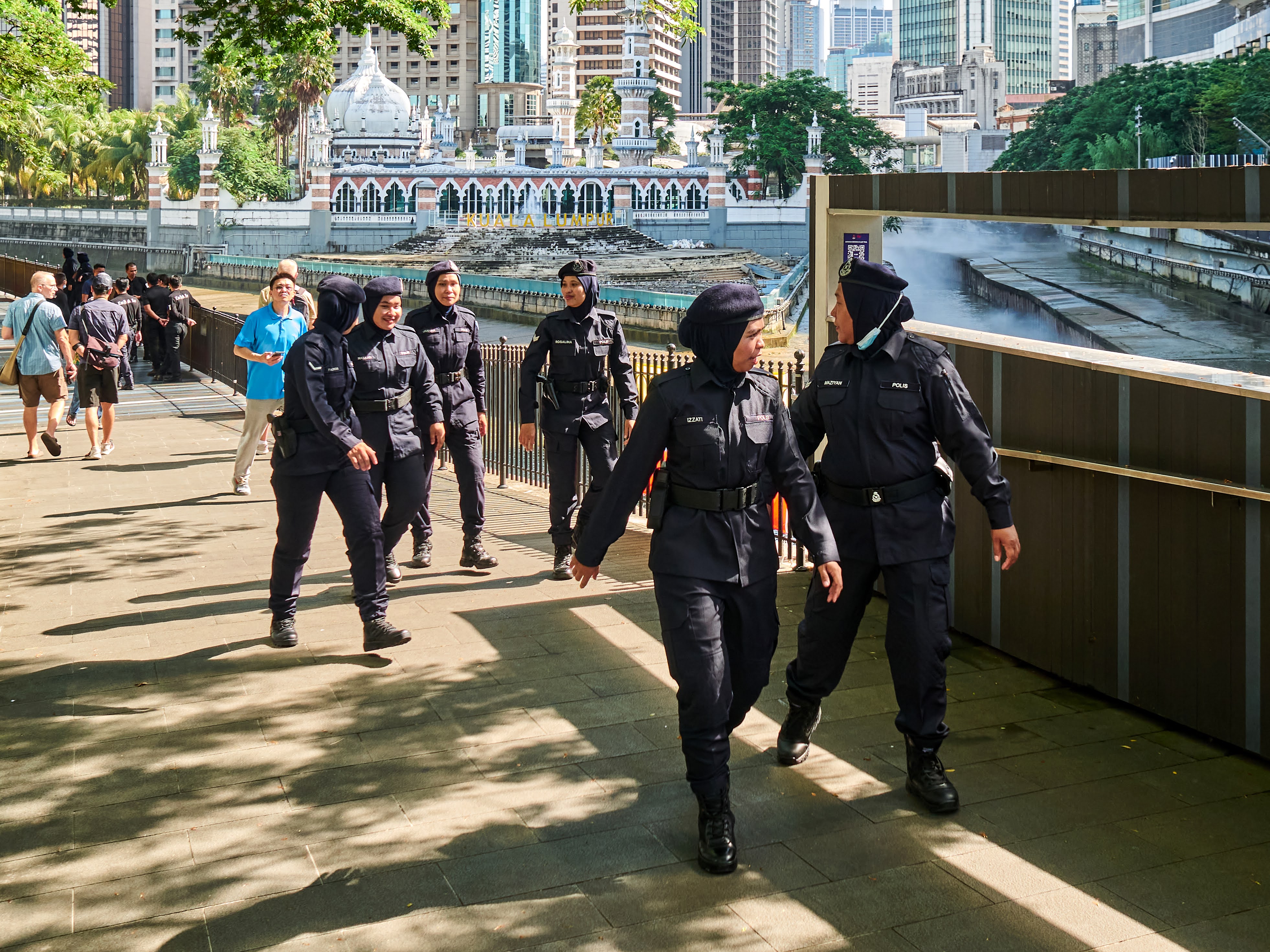I am a huge fan of minimal setup and using smaller cameras for street photography. However that also means the smaller cameras come with some compromises, typically worse handling with smaller gripping area, no EVF, less direct controls and functions and shorter battery life. My favourite small camera setup is Panasonic GM1 and Olympus 17mm F1.8, and I did a POV street video recently with this combo. In the same video, I also shared some tips on how to overcome and workaround the issues of using smaller cameras for street shooting. I shall summarize the points in the video here, and of course, share the fresh images shot around streets of Kuala Lumpur. POV video here (click).
To counter the lack of hand gripping area when using smaller cameras, it is not a bad option to get the additional support grip, usually provided by the manufacturer. The Panasonic GM1 is the world's smallest interchangeable lens camera, and Panasonic did have an additional grip which can be purchased separately which helped immensely with better handling. Similar grip can be found for Olympus earlier E-M10 series cameras, or even the E-M5 cameras. PEN-F also has additional grip for added stability. Using larger and heavier DSLR definitely has the benefit of better camera handling, but it is also counter-productive for street photography, where smaller camera is easier to operate, is less threatening to the people you are shooting and also allowing the photographer to be more agile by carrying less. Adding an extra grip is available, can make a world of difference.
One issue with smaller cameras is having lack of direct buttons, shortcuts, dials or controls. And the buttons and controls are cramped too tightly together, with them being too small to comfortably operate while shooting. Ergonomics is definitely compromised. One way to overcome this issue is simply making use of the touch screen functions. Most newer cameras (even the Panasonic GM1 which is 10 years old now) has very usable touch screen which can greatly help in moving focusing points quickly and efficiently, instead of relying on the tiny buttons which can be cumbersome to work with. Also you can navigate around the camera menu system using the touch screen. While most photographers would prefer to use physical buttons, dials and controls on cameras, smaller cameras just do not have the luxury of having such physical controls, and learning to utilize the touch screen can be a possible alternative, and trust me, for street shooting, it works really well!
Most of the smaller cameras do not come with an electronic viewfinder, unfortunately, so if you want some sort of viewfinder you may need to go for larger camera setup. Using the LCD screen takes some time of getting used to, and is not necessarily a bad thing. Moving the camera away from the eye level shooting encourages more creative composition, going lower or higher than the normal viewing perspective. Doing street photography, especially here in Malaysia we have harsh, unforgivingly bright sun, so one tip I can share is to just max out the brightness setting on the camera's LCD screen. It does help with visibility a lot, and aids framing more effectively.
As for shorter battery life, just get some spares. While the original batteries may be expensive, I have opted for third party batteries. I acknowledge that the third party options may not be as good in terms of quality and durability, but we are doing street photography here, far from anything serious like a paid shoot where you need deliverables to the client. So a bit of compromise, and saving a bit of money can go a long way!
Please support me & keep this site going:




























There are really good cameras that are barely larger. No viewfinder and only useless dials meant for beginners? Not where I'd want to be. Plenty of great options out there to use instead.
ReplyDelete